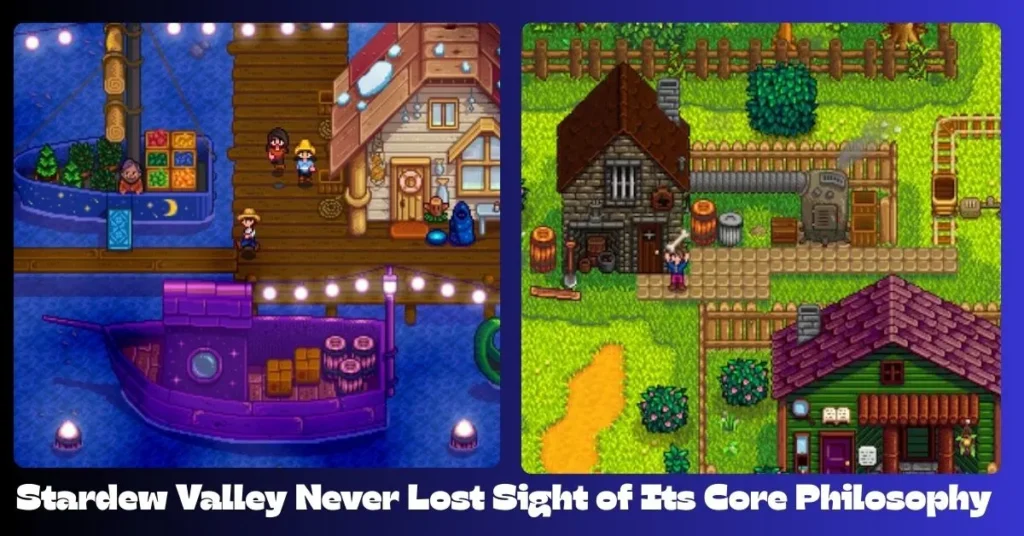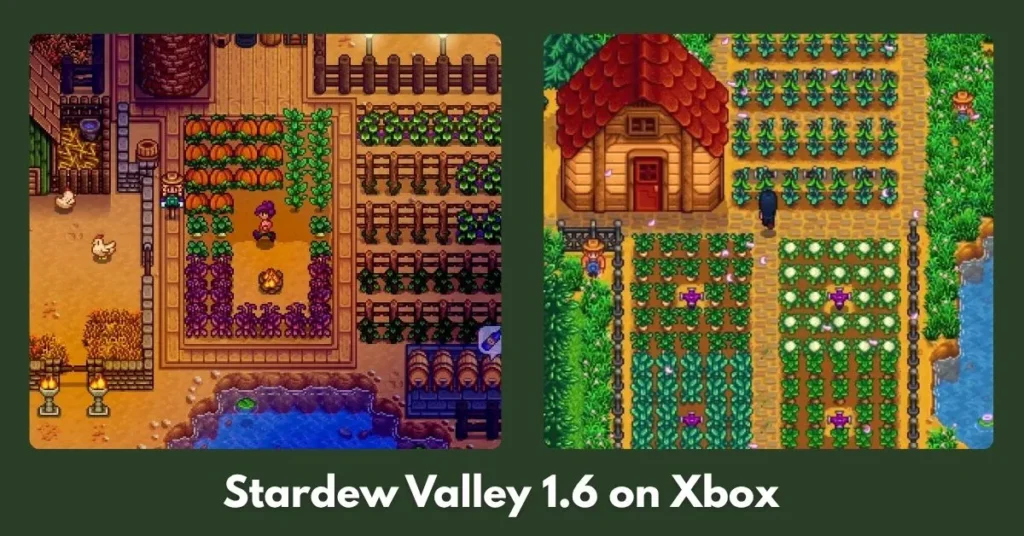Eight years ago, a single developer, Eric “ConcernedApe” Barone, released a game that would go on to become a cultural phenomenon. Stardew Valley arrived on the scene not with a bang, but with the gentle chime of a cowbell, offering an escape from the relentless pace of modern life. In a world of high-octane shooters and sprawling, complex RPGs, this quiet farming simulation carved out a unique and enduring space for itself.
What’s truly remarkable is that after nearly a decade, countless content updates, and a massive community, Stardew Valley has remained true to its foundational principles. It’s a testament to the power of a clear vision and a passionate creator who understood what players genuinely craved: a peaceful, meaningful, and ever-evolving virtual home.
The Genesis of a Cozy Revolution
To understand Stardew Valley’s staying power, you have to look at its roots. ConcernedApe spent four and a half years working on the game alone, drawing inspiration from the Story of Seasons series (formerly Harvest Moon) while aiming to address its perceived shortcomings. His goal was to create a game that was open-ended, immersive, and fundamentally about the simple joys of life.
The core philosophy, as articulated by Barone himself, was about “the fundamentals of human sustenance and existence.” He wanted to give players the feeling of immersion in a small farming community. This wasn’t a game about maximizing profit at all costs or conquering a sprawling world. It was about:
- Connection: Building relationships with the quirky, well-developed characters of Pelican Town.
- Creativity: Shaping a derelict farm into a personalized, productive space.
- Patience: Watching crops grow, seasons change, and stories unfold at their own gentle pace.
- Balance: Juggling tasks like farming, fishing, mining, and foraging, all while maintaining a healthy social life.
This ethos is evident from the very first moments of the game. You’re not thrown into a tutorial-heavy, action-packed prologue. You’re handed a rundown farm and a set of basic tools, and from there, your journey is entirely your own.
Staying True Through Expansion
Over the past eight years, Stardew Valley has grown exponentially. From the addition of new farm types and Ginger Island in the massive 1.5 update to the recent, highly anticipated 1.6 update, the game has been consistently refreshed with new content. Yet, each new feature has been carefully woven into the existing fabric of the game, rather than stapled on as an afterthought.
The recent 1.6 update is a perfect example. Instead of overhauling the core mechanics, it expanded upon them. New festivals like the Desert Festival and mini-festivals like the Trout Derby and SquidFest add variety to the in-game calendar without disrupting the flow.
The new “mastery” system provides powerful new perks for late-game players, rewarding dedication to the game’s core skills—farming, foraging, mining, fishing, and combat. Even small details, like new NPC dialogue and winter outfits, deepen the sense of immersion and community that the game has always prioritized. This commitment to the original vision is what sets Stardew Valley apart.
Updates are not just about adding “more stuff.” They are about enriching the world and the player’s experience within it. The game’s new features feel organic and cohesive, like they were always meant to be there.
A Community Built on Kindness
Beyond the game itself, ConcernedApe’s relationship with his community is a masterclass in modern game development. He has consistently engaged with players openly and respectfully, sharing updates, soliciting feedback, and even fixing bugs that are years old. He has famously stated that his strategy with the community is “no strategy at all,” and that he simply tries to “be a real human.”
This level of transparency and genuine care has fostered a remarkably positive and dedicated player base. The Stardew Valley community is known for its helpfulness, creativity, and lack of toxic behavior, a rarity in online gaming. This is a direct reflection of the game’s peaceful and wholesome nature, and the developer’s own philosophy of respect and kindness.
The fact that all major content updates have been completely free is a further demonstration of this commitment, a thank you to the community that has supported the game for so long.
A Legacy of Authenticity
In a gaming landscape often dominated by microtransactions, seasonal battle passes, and crunch-driven development cycles, Stardew Valley stands as a quiet but powerful rebuttal. It proves that a game built with love, patience, and a clear, unwavering vision can not only survive but thrive.
Eight years on, Stardew Valley isn’t just a game; it’s a digital comfort blanket for millions. It offers a sanctuary where the only pressure is the one you put on yourself. Whether you’re a new player just planting your first parsnips or a veteran farmer with a fully automated farm, the heart of the experience remains the same: a peaceful life, surrounded by a vibrant community, built one day at a time. It’s a reminder that sometimes, the most profound experiences come from the simplest things.
Frequently Asked Questions
Wait, I heard this game is just about farming. Is that it?
Oh, my goodness, no! That’s just the beginning. The game has five main skills: farming, fishing, foraging, mining, and combat. You’ll spend a lot of time in the mines fighting monsters, fishing for legendary fish, and exploring secret areas. Plus, there are tons of townsfolk to befriend, festivals to attend, and a whole community center to restore. Farming is a big part of it, but it’s just one piece of a much larger, cozier puzzle.
Do I really have to get married and have kids? I’m not really into that in games.
Not at all! The game gives you the date option and marry one of the many bachelors or bachelorettes, and you can even have children, but it’s completely optional. You can live your best single-farmer life, focus on your farm, or just be best friends with everyone in town. The game doesn’t punish you for not getting married, so play however you like!
I heard there’s a 1.6 update. What’s new?
The 1.6 update is a huge one! It added a bunch of cool stuff like new festivals (the Desert Festival is a big one!), a new farm type called the Meadowlands Farm, and new crops like carrots and summer squash. There’s also a new “mastery” system for late-game players and a bookseller who comes to town with special books that can boost your skills. And, get this—the NPCs finally have winter outfits! It’s a lot of new things to discover, but it all fits right in with the classic Stardew feel.
Is there an end to the game? I’m worried I’ll run out of things to do.
Nope! The game is open-ended. While there’s a kind of “evaluation” at the beginning of Year 3, it’s not the end. You can keep playing forever, perfecting your farm, and exploring everything the game has to offer. The new updates have only added more to the late-game experience, so you’ll have plenty to keep you busy for hundreds of hours.
What about the developer, ConcernedApe? Is he still working on it?
Yes, he is! Eric Barone is a true indie developer legend. He’s the sole creator of the game and its music, and he continues to work on updates. He’s incredibly dedicated to the game and his community, and the 1.6 update is proof of that. He’s also working on a new game, Haunted Chocolatier, but he hasn’t forgotten about Stardew Valley at all.
Conclusion
Eight years is a lifetime in the world of video games. Trends come and go, franchises fade, and once-beloved titles are quickly forgotten. Yet, Stardew Valley remains. Its enduring success is not a happy accident but the result of a conscious, deliberate choice to prioritize player experience over everything else. ConcernedApe’s dedication to his original vision—a game that celebrates community, personal growth, and the quiet beauty of a simple life—is what has allowed Stardew Valley to flourish. It’s a powerful lesson in game design: when you build a world with integrity and genuine care, players will not only visit but stay for years to come.



